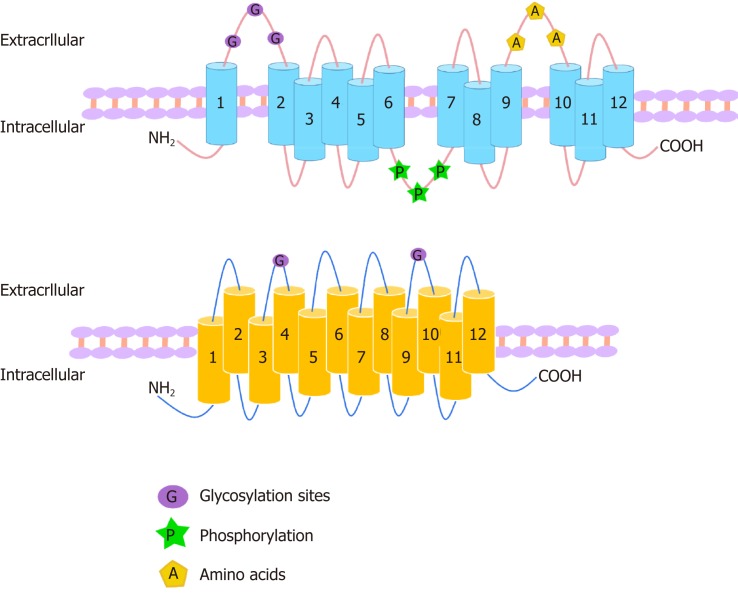Figure 1.
Structures of organic anion transporters and organic anion transporter polypeptides. The structures of the family members of organic anion transporter (OAT) are similar. They each consist of 12 transmembrane domains (TMD) with three highly conserved regions: (1) The large extracellular loop between TMD1 and TMD2 has many glycosylation sites; and (2) the large intracellular loop between TMD6 and TMD7 has residues that are phosphorylated; and (3) TMD9 and TMD10 contain important amino acids. The C-terminus and N-terminus of OATs are located in the cytoplasm. The organic anion transporter polypeptide (OATP) family members have 12 transmembrane segments, which can form six extracellular loops and five intracellular loops. The C-terminus and N-terminus are located in the cytoplasm. One of the OATP members, OATP1B1, is glycosylated in the 2nd and 5th extracellular loops, and it is predicted that other OATPs may also be glycosylated in these two extracellular loops.

